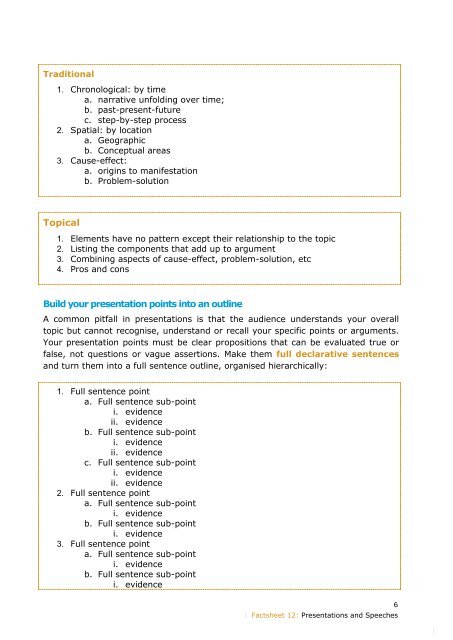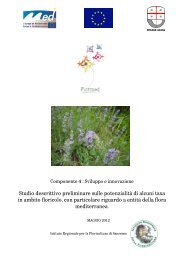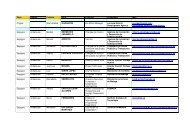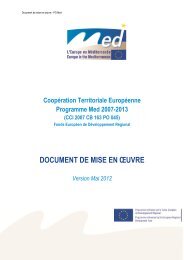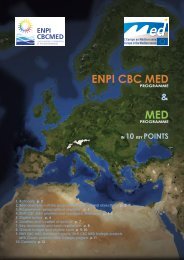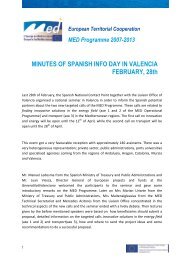MED Communication Handbook - Programme Med
MED Communication Handbook - Programme Med
MED Communication Handbook - Programme Med
Create successful ePaper yourself
Turn your PDF publications into a flip-book with our unique Google optimized e-Paper software.
Traditional<br />
1. Chronological: by time<br />
a. narrative unfolding over time;<br />
b. past-present-future<br />
c. step-by-step process<br />
2. Spatial: by location<br />
a. Geographic<br />
b. Conceptual areas<br />
3. Cause-effect:<br />
a. origins to manifestation<br />
b. Problem-solution<br />
Topical<br />
1. Elements have no pattern except their relationship to the topic<br />
2. Listing the components that add up to argument<br />
3. Combining aspects of cause-effect, problem-solution, etc<br />
4. Pros and cons<br />
Build your presentation points into an outline<br />
A common pitfall in presentations is that the audience understands your overall<br />
topic but cannot recognise, understand or recall your specific points or arguments.<br />
Your presentation points must be clear propositions that can be evaluated true or<br />
false, not questions or vague assertions. Make them full declarative sentences<br />
and turn them into a full sentence outline, organised hierarchically:<br />
1. Full sentence point<br />
a. Full sentence sub-point<br />
i. evidence<br />
ii. evidence<br />
b. Full sentence sub-point<br />
i. evidence<br />
ii. evidence<br />
c. Full sentence sub-point<br />
i. evidence<br />
ii. evidence<br />
2. Full sentence point<br />
a. Full sentence sub-point<br />
i. evidence<br />
b. Full sentence sub-point<br />
i. evidence<br />
3. Full sentence point<br />
a. Full sentence sub-point<br />
i. evidence<br />
b. Full sentence sub-point<br />
i. evidence<br />
� Factsheet 12: Presentations and Speeches<br />
6<br />
�


